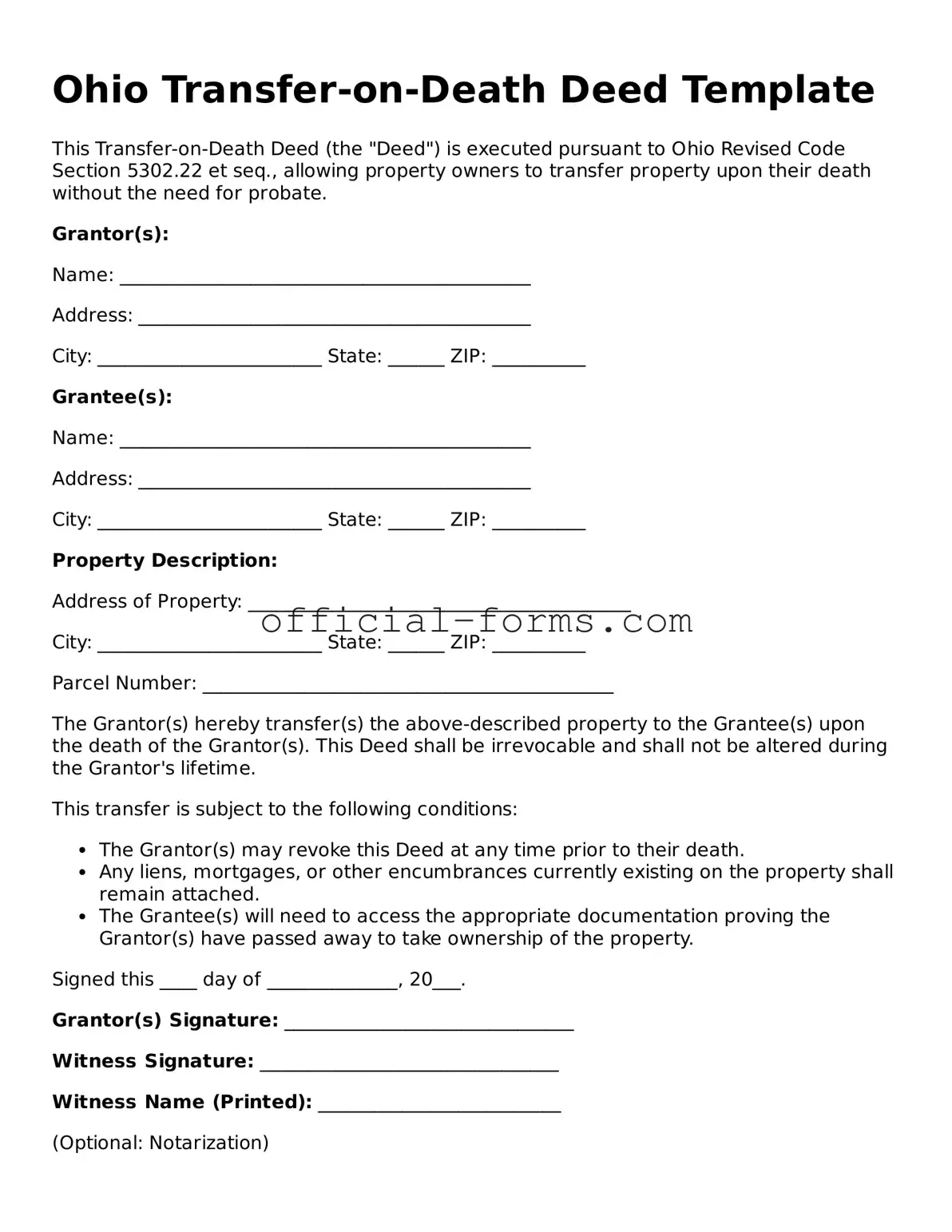When filling out the Ohio Transfer-on-Death Deed form, individuals often encounter pitfalls that can complicate the transfer of property. One common mistake is failing to provide accurate property descriptions. The deed requires a clear and precise description of the property being transferred. Omitting details or using vague language can lead to confusion and potential disputes among heirs.
Another frequent error is neglecting to include the names of all intended beneficiaries. It is crucial to list each beneficiary clearly. If a name is misspelled or omitted, it can create legal challenges and delay the transfer process. Additionally, individuals may forget to specify how the property should be divided among multiple beneficiaries, which can lead to misunderstandings later on.
Many people overlook the necessity of signing the deed in front of a notary public. A signature without notarization renders the document invalid. This step is essential to ensure the deed is legally binding. Similarly, failing to date the deed can lead to complications, especially if there are questions about the timing of the transfer.
Another common mistake involves not recording the deed with the county recorder’s office. Even after completing the form correctly, if it is not filed, the transfer will not take effect. This oversight can cause significant issues for beneficiaries who may believe they are the rightful owners of the property.
Individuals sometimes forget to consider the implications of the Transfer-on-Death Deed on their estate planning. Failing to coordinate this deed with a will or other estate planning documents can lead to conflicting intentions. It is vital to ensure that all documents align to avoid confusion among heirs.
In some cases, people may not understand the tax implications of transferring property via a Transfer-on-Death Deed. They might assume that there are no tax consequences, but this is not always the case. Consulting with a tax professional can provide clarity on potential liabilities that could arise.
Another mistake is not keeping a copy of the completed deed. Individuals should always retain a copy for their records. Without documentation, it can be challenging to prove the existence of the deed if disputes arise in the future.
Some may also fail to communicate their intentions to the beneficiaries. Open discussions about the property transfer can help manage expectations and prevent misunderstandings. A lack of communication can lead to tension among family members during what should be a straightforward process.
Lastly, people often underestimate the importance of reviewing the deed for errors before submission. A thorough review can catch mistakes that may have been overlooked initially. Taking the time to double-check the information can save significant time and effort in the long run.
